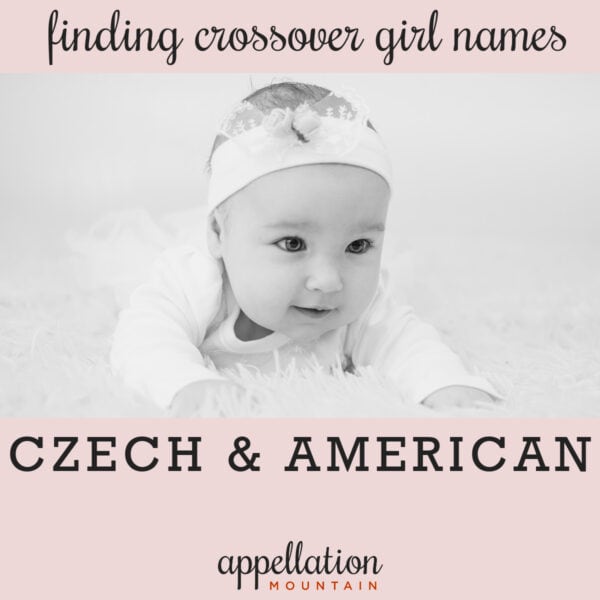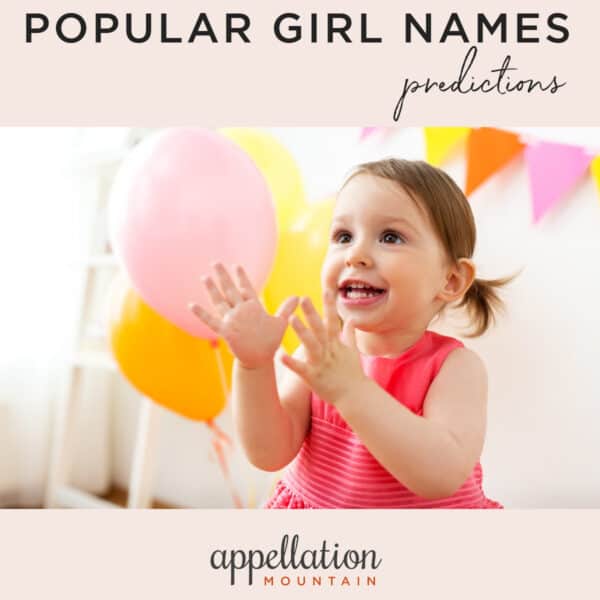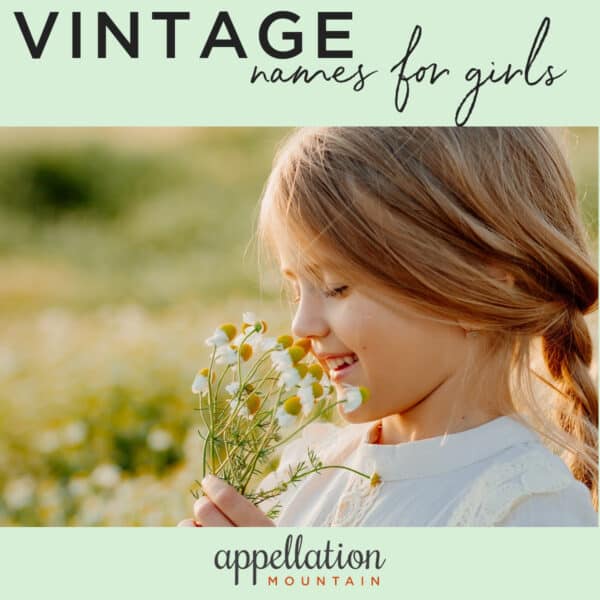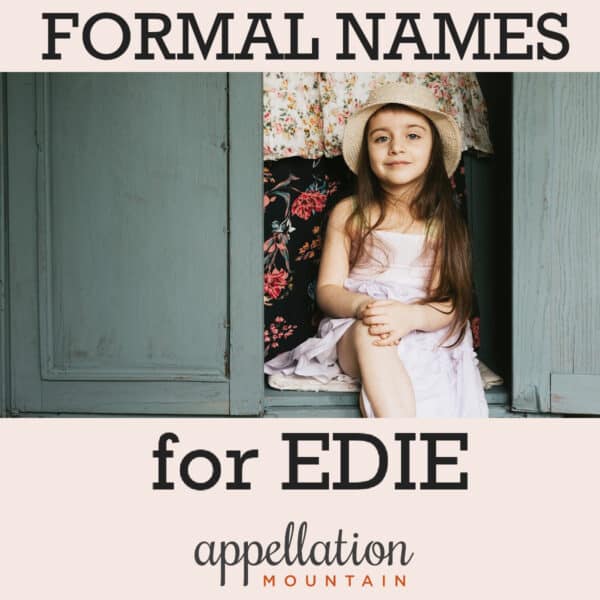
But what about the girls?
While it doesn’t take a name nerd to notice that girls’ names are more varied and diverse than those we give to our sons, the statistics surprise.
From 1880 through 2010, only one girl’s name has never left the US Top 30: Elizabeth.
But there is a long line of also-rans, with more years in the Top 100 than out, and never out of the US Top 200:
- Anna
- Julia
- Katherine – This is a particularly tricky case. The few years that Katherine dipped out of the Top 100, Catherine was on the rise. The sound isn’t subject to the whims of fashion, but the spelling. Kathryn also fared well at different times.
- Margaret
- Mary – If I’d written this list a few years earlier, Mary would’ve been right up there with Elizabeth. But she left the Top 100 two years ago, and shows no signs of making a comeback.
- Rebecca
- Sarah
When it comes to naming our daughters, attention to style is the rule. Is there another way to look at which names might be declared members of that elite sorority, The Classics?
Conventional wisdom tells us that certain names are classics, numbers or no. How many decades have they appeared in the US Top 100?
- Alice: 1880s, 1890s, 1900s, 1910s, 1920s, 1930s, 1940s, 1950s
- Caroline: 1880s, 1990s, 2000s Note: If Carolyn had been included, the stats would look very different!
- Charlotte: 1880s, 1910s, 1920s, 1930s, 1940s
- Eleanor: 1900s, 1910s, 1920s, 1930s
- Frances: 1880s, 1890s, 1900s, 1910s, 1920s, 1930s, 1940s, 1950s
- Grace: 1880s, 1890s, 1900s, 1910s, 1920s, 1930s, 1990s, 2000s
- Helen: 1880s, 1890s, 1900s, 1910s, 1920s, 1930s, 1940s, 1950s
- Jane: 1880s, 1910s, 1920s, 1930s, 1940s, 1950s, 1960s
- Laura: 1880s, 1890s, 1900s, 1910s, 1920s, 1930s, 1940s, 1950s, 1960s, 1970s, 1980s
- Louise: 1880s, 1890s, 1900s, 1920s, 1930s, 1940s
- Rose: 1880s, 1890s, 1900s, 1910s, 1920s, 1930s, 1940s, 1950s
With a slightly expanded definition, there are plenty of classic girls names to consider, both those in heavy circulation in 2012, and those slightly less common. Even the most enduring name for a girl, though, is still more subject to name trends than the classic picks for boys.
Why do you think parents are more adventurous with our daughter’s names? Is there a change happening, with parents willing to bestow trendy or stylish names on their sons, too? Do you favor more traditional names for boys?




Hmm, there’s my name as an “also-ran” classic, although I don’t think of it that way myself. To me it’s a modern standard, because (in Australia at least) it didn’t chart at all until the 1950s. It’s certainly been a safe choice though – although as it’s falling in popularity, that would put it on the no-no list for many (and quite sensibly too, I’m certainly not recommending it).
It always surprises me what names we think of as “classics” have really been in and out of fashion a lot, while names we think of as old-fashioned, or rare, have remained in steady use. Louisa and Sylvia have never been off the charts in Australia, for example.
Like katybug I’m in the minority of name nerds who is more adventurous with boy names than girl names (in theory, as we’ve yet to have any kids). While James is really the only classic boy name that appeals to me, I could easily use any one of the names on this list. I particularly love Rebecca, Rose, Julia, Charlotte, Mary, and (yes it’s vain) Sarah.
Maybe it’s that I have a similar orientation to girls names that many men/dads have to boys names: they want to give their child a name like their own, a name with history regardless of popularity.
I’m feeling fancy! Liz
My parents chose my name in the 80s because it was classic without being common (as in, popular at the time). It was also a family name in use on both sides of the family. Growing up it was rare that I met another Charlotte, even more rare to meet one my own age as they usually seemed ancient. Now of course there are little Charlottes running around everywhere. Its current popularity among the small fry causes people to often get mixed up and call my daughter Charlotte instead of Roseanna.
I can see that happening. I have a friend Nell who has a daughter Sarah, and when I first met them, I was tempted to call the daughter Nell.
This “generational mix-up” reminded me of a mother/daughter duo that I know of from elsewhere online: Jen and Linda. Which one is which will surprise you (though admittedly Jen here is a nickname for Jane and not Jennifer). Maybe this is a useful tip: If you as the parent have a name that’s become more popular in your childrens’ generation, don’t give your child a name that peaked in your own generation if you want to avoid confusion (similar to the recommendation of not using both a girl-leaning unisex name on a boy and a boy-leaning one on a girl in the same sibset if you don’t want to confuse others as to who’s the boy and who’s the girl).
I think that’s a good tip, but I’ve realized that it is the kind of thing that I take for granted – and other people look at me like I’m off my rocker. I generally think it is a good idea to avoid names that are falling in popularity, if only because the name will feel overexposed. (If you name your daughter Hannah today, I know SO many, including one who just turned 21 and used to babysit for us.) On the other hand, this is a fine point that is lost on those of us not obsessed with names … Most people just instinctively pick names ahead of the trends. (Hannah’s sibs are also nicely named and solidly ahead of trend.)
I don’t get called Roseanna nearly as often as Roseanna gets called Charlotte, but it is true that Roseanna peaked in popularity around the time of my own birth (granted, Rosanna still wasn’t in the top 200). I would personally have preferred the less dated Rosamund, but Mark wanted to name our daughter after his late mother. It was hard to argue against that :o) Her rather odd spelling is also the same as her paternal grandmother’s.
I’m surprised by what’s not on the list: Ruth, Hannah, Rachel, Madeleine/-line/-lyn, Ann/Anne, and Maria.
My great aunts on my dad’s side were Betty, Dolores, Ruth Nancy, and Helen. On mom’s side: Ruth Carmen, Anna (nn Ann), Betty, Nancy, Edna, Phyllis, Lorraine, and Alice.
I seriously thought about Margaret and Julia/Juliet and about 1/2 of the names on the second part of the list.
I surprised Charlotte isn’t in the top 100 for the 2000s. I’ve seen so many recently – but maybe she’s in the 2010s instead.
Helen! Love it.
A friend and I were talking about a related topic on the weekend: maybe it’s not just that people are more adventurous with girls’ names, but also that there are more very similar choices available for girls than there are for boys. To take the example of Alice, although it is coming back into vogue, during its decades-long absence from the top 100, you had similar-sounding names such as Alison, Alyssa and Alicia rising up the charts at various points. As you note, at one time Carolyn well surpassed Caroline in popularity, as did Carol(e). That kind of subtle shift in taste isn’t as possible with boys’ names I don’t think, because the range of similar-sounding options isn’t as big. It doesn’t work for every name, of course, but there are more examples such as Laura-Lori-Lauren or Eleanor-Ellen-Elaine-Ella-Eliana. I think certain types of names tend to go in cycles – for a while, the longer, more classic form becomes popular, then is replaced by a shorter, peppier variant or similar-sounding name, and then when that starts to sound tired, interested in the classic form revives.
I think that’s probably part of it, Havoye. I remember researching the Mardi Gras royalty names for Nameberry a while back, and fashions clearly changed. In some generations, girls listed their full names; in others, only a casual form. I’ll bet that some of those casually named girls had the same formal names as the earlier/later generations, but it was no longer in vogue to list them.
I think our boys and girls lists were quite similar in terms of adventurousness.
When I was pregnant I found that our girl name list was more conservative than our boys’ list. I think it was because the girls’ list was full of family names and, since we didn’t like any of the family boys’ names, we felt free to look beyond the mainstream. But I bet we are in the minority of baby namers in that respect.
I think that when it comes to naming boys the father may have a greater voice. They probably veered more towards an everyday kind of guy name. Names the fit in and fit a wide variety of personalities.
A boy name James or Robert could be studious, spotty or artsy. A boy named Talon or Gunnar would possibly have a harder time being nerdy.
With females I think maybe it has something to do with standing out. A girl named Sarah or Elizabeth could be anyone with any personality….but her name won’t help her stand out. A girl named Greer or Harper or Charlie could be any personality…but her name will help her stand out a bit.
*sporty not spotty.
Because so many of these names haven’t been quite as popular since the ’50s or 60s, they are more appealing to me than the “never out of style” boys’ names. I like the ones in the boys’ edition, but they leave me fairly uninspired. But these? Some of these are names I’d truly use: Eleanor, Louise, Helen.
You’re right! I could probably have done a more exhaustive study of the girls’ names … and boys’ names, too. I wonder what the by-decade analysis would look like for boys …